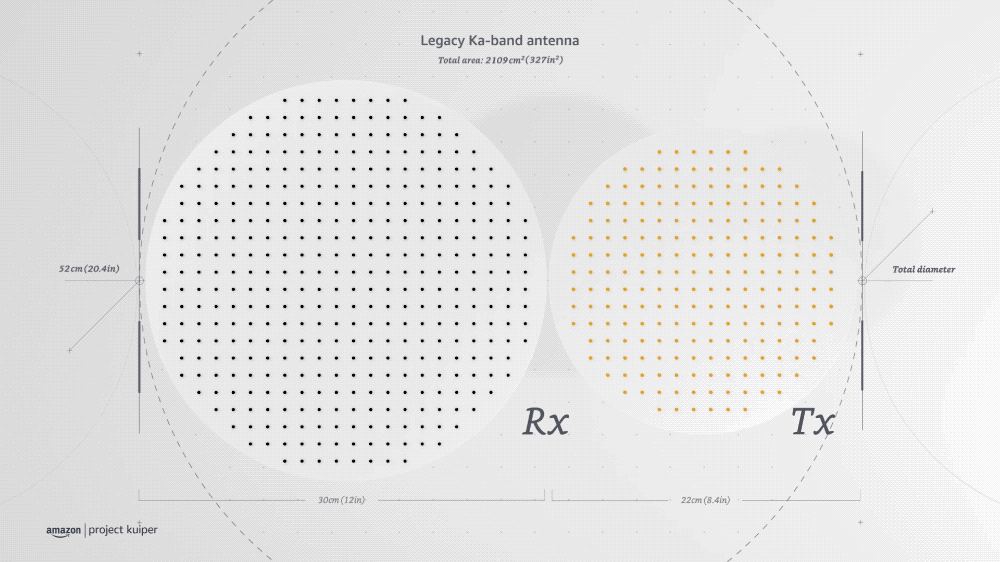Amazon’s Project Kuiper is perhaps one of the company’s most ambitious projects yet: Building a globe-spanning broadband wireless network to deliver affordable connectivity to underserved communities. Project Kuiper has made progress this year with a key FCC approval, and now it’s also created a prototype of a key piece of hardware that will help its future customers take advantage of the satellite network on the ground.
This is actually a big part of what will help make Project Kuiper a service that’s broadly accessible, and a development that puts the Amazon project in an industry-leading position with a unique advantage. The prototype developed by the team communicates on the Ka-band of the wireless spectrum, and is the smallest and lightest piece of hardware that can do that. It’s able to achieve speeds of up to 400 Mbps, and Amazon says that it’ll actually get better through future iterations.
For technical details on how this was accomplished and what it means for the final design, Amazon explains from a blog post describing the design process:
Our phased array antenna takes a different approach. Instead of placing antenna arrays adjacent to one another, we used tiny antenna element structures to overlay one over the other. This has never been accomplished in the Ka-band. The breakthrough allows us to reduce the size and weight of the entire terminal, while operating in a frequency that delivers higher bandwidth and better performance than other bands. Our design uses a combination of digital and analog components to electronically steer Ka-band beams toward satellites passing overhead.
The result is a single aperture phased array antenna that measures 12 inches in diameter, making it three times smaller and proportionately lighter than legacy antenna designs. This order of magnitude reduction in size will reduce production costs by an equal measure, allowing Amazon to offer customers a terminal that is more affordable and easier to install.

Image Credits: Amazon
The bottom line is that Amazon’s design for Kuiper can greatly reduce the cost and complexity of building the ground-based infrastructure that will be required in order to provide access to its network to end-users. It’s also low-latency, and Amazon has found that it can provide 4K streaming capabilities even during its testing with geostationary satellites today – which are as much as 50 times further out from where Project Kuiper satellites will eventually be positioned in low-Earth orbit.
Amazon isn’t yet sharing specific pricing information about what the terminal will eventually cost, beyond touting its affordability relative to existing solutions. I’ll be talking to Amazon SVP of Devices and Services Dave Limp at TC Sessions: Space today, and we’ll discuss the antenna along with everything else about the project.
Source: Tech Crunch


